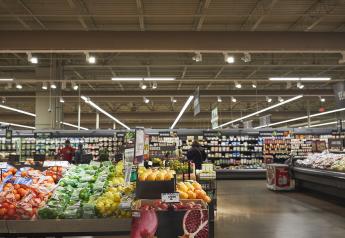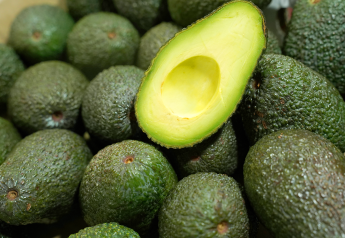Analyst: Amazon’s grocery stores should be taken seriously

Precise location and efficient operation of stores are among the reasons the grocery industry should be taking seriously Amazon’s new Fresh banner, said Bill Bishop, chief architect of retail consulting firm Brick Meets Click, during a session at the West Coast Produce Expo.
Real estate analysis shows that locations Amazon has selected for stores have generally been areas where the median income is higher, which means those areas likely have a higher-than-average population of Amazon Prime members, Bishop said. The locations are mostly in high-traffic areas, where there’s a lot of business to be had already.
The locations being targeted for stores are “second-use facilities,” meaning that opening locations doesn’t require ground-up construction, Bishop said. Last but not least, the locations have smaller footprints than many traditional grocery stores, roughly 30,000-35,000 square feet.
“I had thought early on that it was an interim step,” Bishop said. “In other words, maybe they weren’t really sure and they would as a consequence want to do a little bit more experimenting and then the next step would appear and they would come with their final solution. Once we had a chance to get under the hood, I’ve changed my thinking on that, and I think they know exactly what they’re doing and where they’re going and that the stores are extremely well built to do that.”
Bishop mentioned that a former Lidl employee noted to him that at least a dozen of his former Lidl colleagues — supply chain and operations professionals — have moved over to Amazon, bringing expertise on running small and medium stores efficiently. That conversation, the real estate analysis and other research have led Bishop to the conclusion that, though the new Fresh banner may look relatively conventional, it has some remarkably important attributes.
“What we realized was that the new Amazon store requires less than half the capital to open compared to a similar ground-up store,” Bishop said. “If the capital requirement is lower, then the occupancy cost is going to be lower, and if the occupancy cost is lower and they’re running them efficiently, the sales volume necessary to move from a loss to a profit, what we call break-even, is lower.
“What I now believe is the case is that these stores are actually built to sustain themselves when more conventionally constructed and operated stores start to go underwater,” Bishop said. “Because it doesn’t cost them very much to open, and because they’re very low cost to run, and because they’re deployed right in the middle of where their sweet-spot customers are, I see it as pretty much a long-term proposition.”
Amazon’s grocery format will likely continue to evolve, but they are notable even in their current form, Bishop said.
“They are stores that we have to take very seriously even though they look quite traditional or conventional because they’ve got some operating characteristics that are going to make them really durable,” Bishop said.
Another area to watch is how Amazon could experiment with pricing to incentivize certain items to be purchased in stores versus online. There has been some analysis that suggests the retailer is already working on this, Bishop said.
“If, for example, the product is a fragile product that doesn’t lend itself to go through the sort of normal warehousing operation and would be handled more effectively through the store, then they’ll actually make it cost more for you to buy it online than in the store ... ” Bishop said. “It may be that they’re using price at a micro level to fine-tune their business. If they are doing that, that opens up an entire new set of possibilities we’re all going to have to think about differently.”
Bishop also spoke during the West Coast Produce Expo session about the growth of online grocery since the start of the pandemic, the operational improvements being made to make the fulfillment of online orders more efficient, and the steps retailers are taking to handle increased volumes of online grocery orders.








